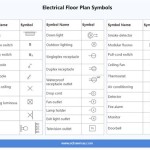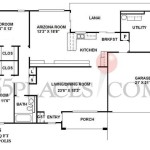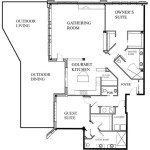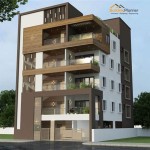Essential Aspects of Single Story Small House Floor Plans
Single-story small house floor plans offer a perfect blend of efficiency, comfort, and livability. They are ideal for various lifestyles, from young professionals to empty nesters, and can be customized to fit specific needs and preferences. This article will delve into the essential aspects of single-story small house floor plans, providing valuable insights to help you create the perfect home.
1. Open vs. Closed Floor Plan
One of the first decisions to make is whether to opt for an open or closed floor plan. Open floor plans combine different living areas into one seamless space, promoting a sense of spaciousness and flow. Conversely, closed floor plans separate rooms with walls, creating distinct and private spaces.
Open floor plans work well for smaller homes, as they make the space feel larger and more connected. They also facilitate interaction and communication among family members and guests. Closed floor plans, on the other hand, offer more privacy and quiet, especially for homes with separate bedrooms and living areas.
2. Flow and Circulation
The flow and circulation of your home are crucial for creating a functional and comfortable space. Consider the placement of rooms and the transitions between them. The entryway should lead smoothly into the main living area, and bedrooms should be easily accessible without having to navigate through other rooms.
Also, think about the flow of light and air. Windows and doors should be strategically placed to bring in natural light and create a sense of openness. Cross-ventilation can help with air circulation and reduce the need for artificial cooling.
3. Room Sizes and Proportions
The size and proportions of rooms significantly impact the overall feel and functionality of your home. While small homes may have limited space, it's essential to create rooms that feel comfortable and proportionate. The main living area should be spacious enough to accommodate furniture and allow for easy movement, while bedrooms can be smaller.
Pay attention to the relationship between different room sizes. The kitchen should adjoin the dining area, and the master bedroom should be larger than the secondary bedrooms. Good proportions can make a small home feel larger and more cohesive.
4. Storage and Organization
Storage is often a challenge in small homes, but there are many clever ways to maximize available space without sacrificing aesthetics. Built-in storage solutions, such as bookshelves in walls or under-stairs storage, can keep clutter at bay. Consider multi-purpose furniture with hidden storage, such as ottomans with built-in drawers.
Vertical storage is also a great way to save space. Install shelves in closets, use stackable bins, and hang organizers on walls. By utilizing vertical space, you can keep your home tidy and organized.
5. Natural Light and Outdoor Connection
Natural light not only brightens up a home but also makes it feel more spacious and inviting. Large windows, skylights, and patio doors can all bring in sunlight and connect the interior with the outdoors.
Additionally, consider the orientation of your home to maximize exposure to natural light. If possible, place living areas on the south side of the house to take advantage of the most sunlight during the day.
6. Energy Efficiency and Sustainability
Energy efficiency and sustainability should be considered in all stages of designing a single-story small house floor plan. Opting for energy-efficient appliances, proper insulation, and high-performance windows can significantly reduce energy consumption and save on utility bills.
Other sustainable features to consider include solar energy systems, rainwater collection systems, and low-maintenance landscaping. Incorporating these elements into your home can minimize its environmental impact and contribute to a healthier and more sustainable lifestyle.
7. Customization and Personalization
Your single-story small house floor plan should reflect your individual needs and preferences. Don't hesitate to customize it to fit your lifestyle and create a home that truly feels like your own.
If you enjoy cooking, consider a larger kitchen with ample counter space and a pantry. If you work from home, incorporate a dedicated home office space into the floor plan. By tailoring the design to your specific requirements, you can create a home that is both functional and deeply personal.
Conclusion
Designing a single-story small house floor plan is an exciting and rewarding process. By carefully considering the essential aspects discussed above, you can create a home that is not only functional but also embodies your unique style and aspirations.
Remember to prioritize flow and circulation, natural light, storage, and energy efficiency. With careful planning and attention to detail, you can create a single-story small house that surpasses your expectations and provides a comfortable and inviting living space for years to come.

48 Ideas House Plans One Story Country Front Elevation For 2024 Remodelhouseplans Small Layout Floor Tiny

10 Small House Plans With Open Floor Blog Homeplans Com

Small Cabin House Plans Floor Construction Guest

Unique One Story House Plans Monster

Small One Story 2 Bedroom Retirement House Plans Houseplans Blog Com

Best One Story House Plans And Ranch Style Designs

House Plan 45185 One Story Style With 691 Sq Ft 1 Bed Bath

Stylish One Story House Plans Blog Eplans Com

7795 2 Bedrooms And 1 5 Baths The House Designers
10 Small House Plans With Open Floor Blog Homeplans Com








